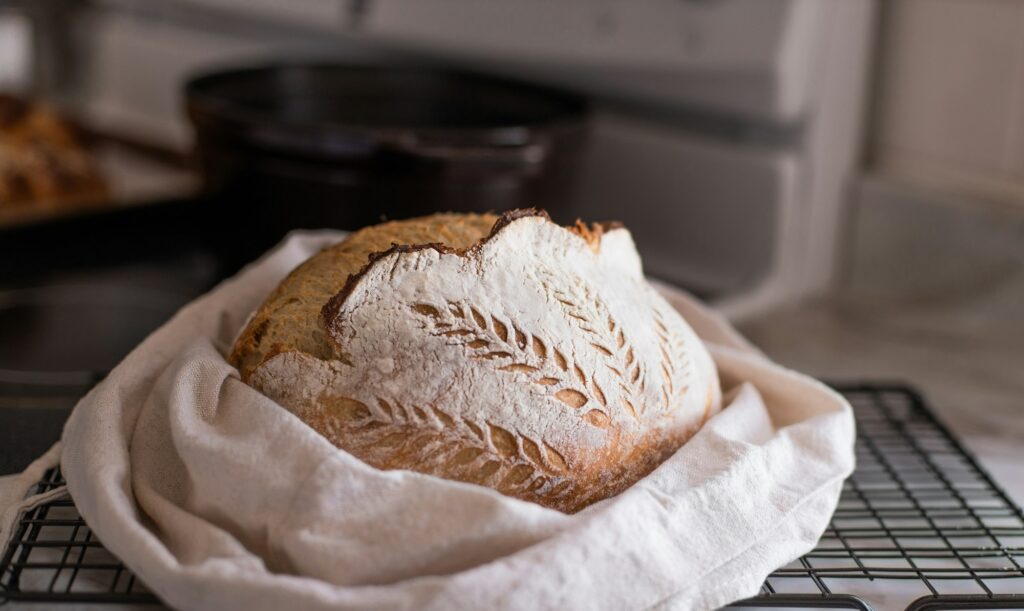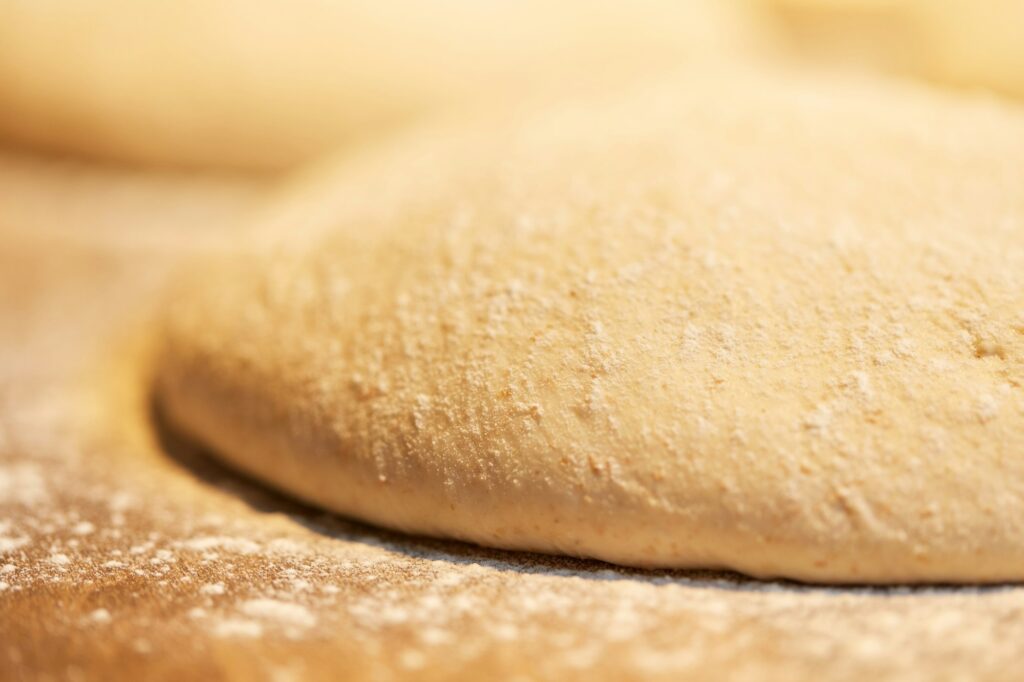In the realm of baking, the quest for creating the perfect loaf of bread often hinges on the use of yeast. Yeast, a fundamental ingredient, is renowned for its ability to make bread rise, yielding a light and airy texture. However, what happens when you’re faced with the challenge of making yeast-free bread? This predicament has prompted bakers to explore alternative methods to achieve a desirable rise in bread, bypassing the need for traditional yeast.
The historical and cultural significance of yeast-free bread spans across various cultures and epochs, highlighting humanity’s resilience and creativity in food preparation. From the Irish Soda Bread cherished for its simplicity and rustic charm to the Australian Damper, historically baked over campfires by explorers, yeast-free breads are a testament to baking’s adaptability.
Venturing into the world of yeast-free baking is not merely a workaround for when yeast is unavailable; it’s a doorway to rediscovering age-old baking traditions and unearthing new flavors and textures. As we delve deeper into the nuances of making bread rise without yeast, we’ll explore the key ingredients and tips. Additionally, we will look at the sheer variety of bread that can be produced. So, it ensures that even without yeast, the bread remains an indelible part of our culinary landscape.
Why Go for Yeast-Free Bread?
Opting for yeast-free bread is not only a matter of necessity but also a choice for many. The reasons vary widely, from health considerations and dietary restrictions to the simple unavailability of yeast. Let’s explore these reasons further:
- Health Considerations and Dietary Restrictions: For individuals with allergies or sensitivities to yeast, yeast-free bread offers a viable alternative that doesn’t compromise on taste or texture. It also caters to those following specific dietary regimes that limit yeast consumption.
- Availability Issues with Yeast: There are instances, such as during shortages or in remote locations, where yeast may not be readily available. In such cases, knowing how to make bread rise without yeast becomes an invaluable skill.
- Exploring Traditional Baking Methods: Beyond necessity, the pursuit of yeast-free bread making is often driven by a desire to reconnect with traditional baking methods. These methods, which predate the widespread use of commercial yeast, offer a window into the past and a chance to experience bread in its most elemental form.
The journey into yeast-free baking is not just about overcoming the absence of yeast; it’s about embracing the diversity of baking techniques and the myriad flavors that can be achieved. It challenges us to rethink our approach to bread making and to appreciate the simplicity and ingenuity of traditional baking methods.
Key Ingredients for Yeast-Free Bread
Embarking on the journey of making bread without yeast requires familiarity with a set of key ingredients that ensure the bread still rises and retains a satisfying texture. Here’s a breakdown of these essential components:
- Flour: The backbone of any bread, flour provides the structure. While all-purpose flour is commonly used, whole wheat or self-raising flour can introduce different flavors and nutritional profiles. For those exploring gluten-free options, a blend of gluten-free flours can serve as an excellent base.
- Leavening Agents: In the absence of yeast, baking powder and baking soda become the heroes of rise and fluffiness. These chemical leaveners release gas into the dough upon mixing and heating, creating the air pockets that give bread its lift.
- Liquids: Milk, water, or non-dairy alternatives like almond or soy milk are essential for hydrating the flour, creating a dough or batter. The choice of liquid can influence the bread’s moisture level and flavor profile.
- Fats: Incorporating oil or butter into the dough contributes to the bread’s tenderness and richness. Fats also help in achieving a softer crust and prolonging the bread’s freshness.
- Sweeteners: A touch of sugar or honey not only adds subtle sweetness but also enhances the flavors of the other ingredients. In recipes where baking soda is used, sweeteners can balance any metallic taste the leavener might impart.
By understanding the role and potential variations of these ingredients, bakers can experiment with yeast-free bread recipes that cater to their taste preferences and dietary needs. Whether aiming for a dense, hearty loaf or a light, fluffy one, the combination and proportions of these key ingredients are critical in achieving the desired outcome.
Diverse World of Yeast-Free Bread Varieties
The landscape of yeast-free bread is rich and diverse, catering to a vast array of tastes and culinary traditions. With each variety comes a unique set of flavors, textures, and ingredients, making yeast-free options an exciting exploration for bakers and bread lovers alike. Let’s delve deeper into some of the most cherished yeast-free bread varieties:
- Irish Soda Bread: A quintessential example of simplicity in baking, Irish Soda Bread is celebrated for its straightforward approach and delightful results. Utilizing baking soda as a leavening agent, this bread magically rises through the reaction between the soda and buttermilk’s acidity. This process yields a bread with a dense crumb and a distinctively crusty exterior, beloved by many for its rustic charm and heartiness.
- Quick Breads: This category is a testament to the versatility and broad appeal of yeast-free baking. Encompassing a range of baked goods from loaves to muffins and scones, quick breads are defined by their use of baking powder or baking soda for leavening. The beauty of quick breads lies in their diversity, with recipes spanning from the sweetness of banana bread to the savory delights of cheddar bread.
- Flatbreads: The world of flatbreads offers a glimpse into the global tradition of yeast-free baking. Varieties such as pita and naan have been staples in diets around the world, cherished for their simplicity and versatility. These breads are integral to many cultural cuisines and continue to be a popular choice for their ease of preparation and delicious taste.
Each of these yeast-free bread varieties brings its unique characteristics to the table, offering endless possibilities for customization and experimentation. Whether you’re drawn to the rustic appeal of Irish Soda Bread, the quick satisfaction of quick breads, or the cultural richness of flatbreads, there’s a yeast-free option to suit every occasion and palate.
Enhanced Baking Techniques for Perfect Yeast-Free Bread Every Time
Achieving that ideal crust and tender crumb in homemade bread might seem like a feat reserved for professional bakers. However, with a few simple adjustments and tricks, even those new to the kitchen can bake bread that rivals artisanal loaves. Here are some refined tips to ensure your bread-making journey is both successful and enjoyable:
Achieving a Golden, Crispy Crust:
- Lightly brushing your dough with milk or a beaten egg before placing it in the oven can significantly enhance the color and texture of the crust. This step leads to a beautifully golden and appealing finish that’s crispy to the touch.
- For an extra glossy surface, consider an egg wash mixed with a bit of water, which adds a rich, golden hue and a delicate shine to your bread.
Preventing Over-Browning:
- If your loaf starts to brown too quickly, a simple piece of aluminum foil loosely tented over the top can save the day. This prevents the crust from darkening too much without affecting the bread’s rise or texture.
Enhancing the Rise with Acidic Ingredients in Yeast-free Bread:
- Integrating acidic ingredients such as buttermilk or yogurt into your dough can be a game-changer, especially when using baking soda as a leavening agent. These ingredients interact with the baking soda, creating carbon dioxide and contributing to a lighter, airier loaf.
The Importance of Cooling:
- Allowing your bread to cool completely on a wire rack is crucial for achieving the perfect slice. Cutting into bread too early can cause it to crumble or become gummy. Patience during the cooling process ensures a clean cut and optimal texture.
Incorporating these techniques into your baking routine can dramatically improve the quality of your homemade bread. From the crust to the crumb, each element of your loaf can reach new heights of baking perfection. Whether embarking on a simple no-knead loaf, a batch of rustic flatbreads, or venturing into the world of quick breads, the path to baking excellence is filled with endless possibilities and discoveries. Embrace these strategies, and watch as your bread becomes the highlight of any meal, gathering, or cozy day at home.
Step-by-Step Guide: Making Yeast-free Bread
Making bread without yeast may seem daunting at first, but with a few simple steps, you can achieve delicious results. Here’s a detailed guide to help you through the process:
Mixing the Dry Ingredients:
Begin by combining your dry ingredients—flour, baking powder or baking soda, and salt—in a large bowl. If you’re adding sugar or any dry flavorings (like herbs or spices), mix them in at this stage. Ensuring these ingredients are well combined helps achieve a uniform rise and flavor distribution.
Adding the Liquids:
Make a well in the center of your dry ingredients and pour in your chosen liquids—milk, water, or a non-dairy alternative. If your recipe calls for fats like oil or melted butter, add them now. Gradually mix the wet and dry ingredients together until a cohesive dough forms. The consistency will vary depending on the type of bread you’re making; some doughs may be sticky and thick, while others might be more batter-like.
Shaping the Dough:
For loaves and certain types of flatbreads, you’ll shape the dough into the desired form on a lightly floured surface. Quick breads and some flatbreads don’t require kneading, but gently bringing the dough together ensures even ingredient distribution. If you’re making a loaf, transfer the dough to a greased baking tin. For flatbreads, you may roll out the dough into circles or rectangles, depending on the recipe.
Baking:
Preheat your oven according to your recipe’s instructions, as the temperature can vary significantly between different types of bread. Place your dough or batter in the oven and bake until the bread is golden brown and sounds hollow when tapped on the bottom. The baking time will depend on the size and shape of your bread.
Cooling:
Allow your bread to cool on a wire rack before slicing. This step is crucial as it lets the bread’s structure set, preventing it from becoming too crumbly or dense.
Customization and Variations for Yeast-Free Bread
The beauty of making bread without yeast lies in its adaptability. You can easily customize recipes to suit your taste preferences and dietary needs, making each loaf uniquely yours. Here are some ideas for customization and variations:
Incorporating Whole Grains and Seeds:
Boost the nutritional value of your bread by adding whole grains like oats, quinoa, or whole wheat flour. Seeds such as sunflower, pumpkin, or flaxseeds can add texture and a nutty flavor.
Gluten-Free Adaptations:
For those avoiding gluten, substitute all-purpose flour with a gluten-free flour blend. Remember to check if your baking powder is gluten-free too. Xanthan gum might be needed to improve the texture.
Flavor Additions:
Herbs, cheeses, and dried fruits can transform the flavor profile of your bread. Consider adding rosemary, cheddar, or cranberries for a savory, cheesy, or sweet twist, respectively.



